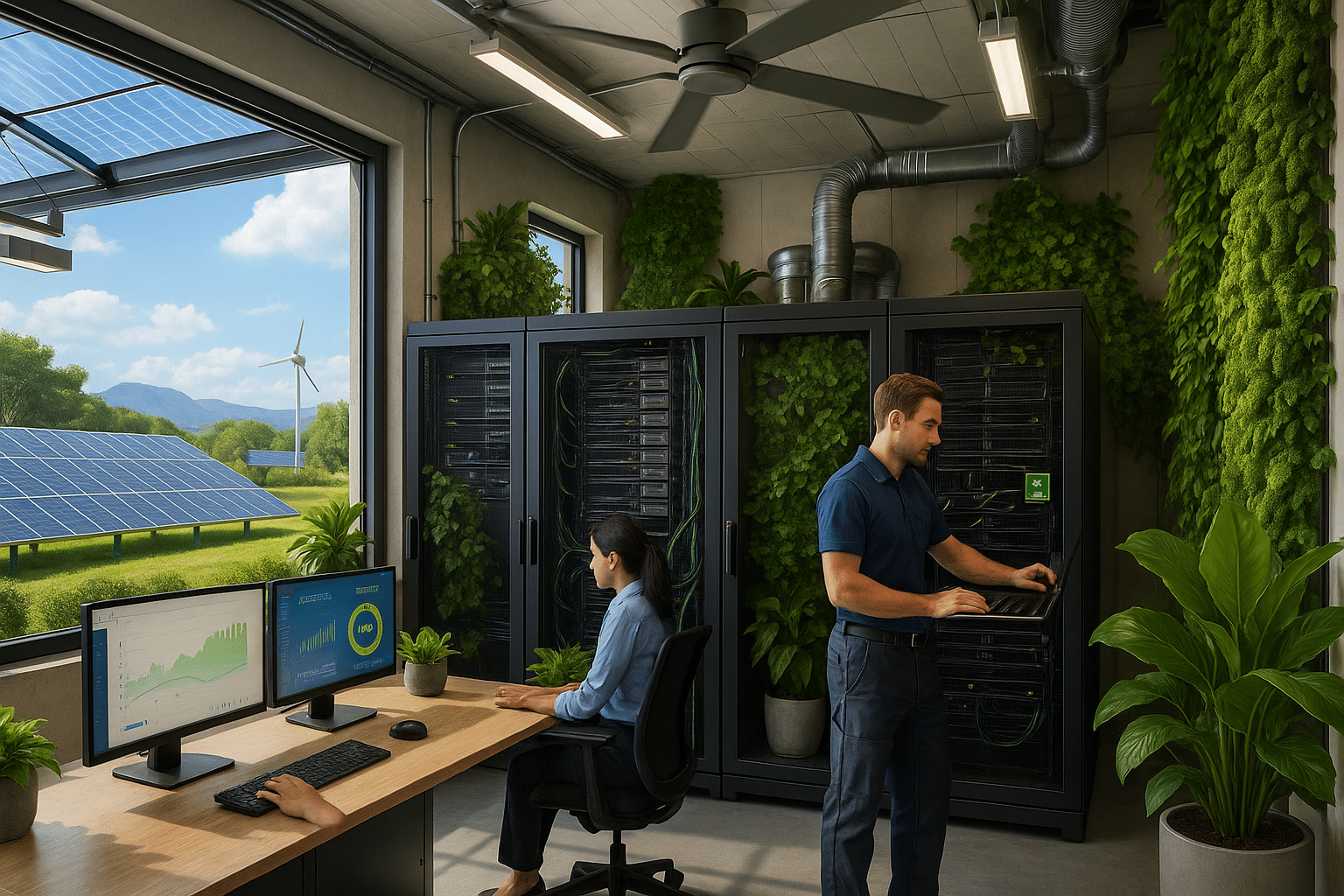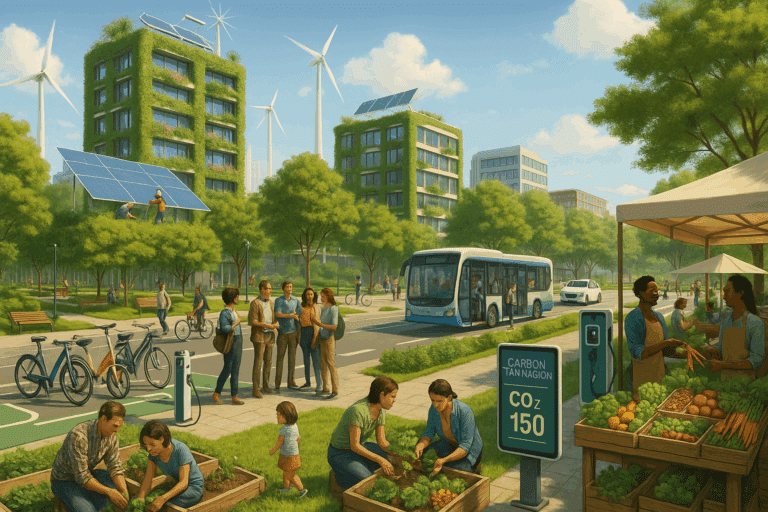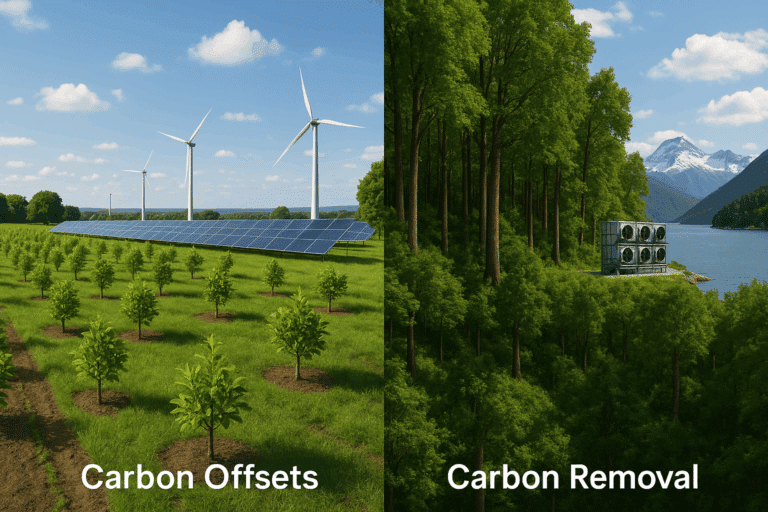However, these immense data warehouses have been under scrutiny for their vast energy consumption and consequent environmental impact. That’s where the concept of ‘Greening the Grid’ comes into play. 🌍💻
As we seek to pave a more sustainable future, data centers worldwide are adapting their infrastructures and practices to reduce their carbon footprints, making a significant contribution towards mitigating climate change. In this article, we’ll delve into how data centers are going green, the technologies involved, and the future implications of these changes. Get ready for a deep dive into a revolutionary approach in data management – a step towards a more sustainable and eco-friendly tech world. 🍃
One might wonder, how is a massive data center, brimming with power-hungry servers, going to achieve this green transformation? The answer lies in a combination of innovation, strategy, and commitment to sustainability. From renewable energy sourcing and innovative cooling systems to energy-efficient design and waste heat utilization, data centers are employing a plethora of strategies to minimize their carbon emissions. 🏭⚡🔋
Investing in renewable energy sources, such as wind, solar, and hydropower, is a crucial element of the greening initiative. Data centers are either purchasing green energy from the grid or setting up their own renewable power plants. This switch to renewable energy is not only reducing their carbon footprint but also setting a precedent for other sectors to follow. ☀️🌬️💧
Efficient use of energy is another pivotal aspect of this initiative. Newer technologies like liquid cooling and heat recovery systems are replacing traditional air conditioning units, offering a more energy-efficient and cost-effective cooling solution. The use of advanced monitoring tools and automation is further enhancing efficiency, enabling optimal utilization of resources. 🌡️👨💻
Reducing, Reusing, and Recycling in Data Centers
As the old adage goes, “Reduce, Reuse, Recycle,” data centers are applying this principle to manage their waste. Many centers are now designed to reuse the waste heat generated by servers, repurposing it for other uses such as heating buildings. Moreover, there’s a growing trend towards using recycled materials in data center construction, further minimizing the environmental impact. 🏗️🔄
But this green transformation is not just about technology and infrastructural changes. It’s also about fostering a culture of sustainability within the IT sector. Data centers are setting sustainability goals, measuring their progress, and being transparent about their environmental impact, thereby driving the industry towards a greener future. 🎯📊
As we move through this piece, we will unpack these strategies in detail, discuss real-world examples of green data centers, and explore the challenges and opportunities this transformation presents. This article is not just for tech professionals or environmental enthusiasts, but for anyone interested in understanding how the digital world is adapting to combat climate change. 🌐🌳
So, fasten your seatbelts as we journey through the innovative world of green data centers. Let’s explore together how the powerhouses of the digital world are stepping up to take responsibility for their environmental impact and spearheading a much-needed change towards a sustainable future. 🚀
The Path to a Sustainable Future: Understanding Green Data Centers
As our world becomes increasingly digital, data centers have rapidly emerged as the backbone of the global information technology (IT) infrastructure. However, with the exponential growth in data processing needs, these digital factories have also become major consumers of energy, significantly contributing to global carbon emissions. In response, tech companies are now actively looking for ways to make data centers more eco-friendly – a concept known as ‘greening the grid.’ This revolutionary approach involves incorporating sustainable energy sources, optimizing energy use, and employing advanced technologies to reduce carbon footprints. To gain a deeper insight into this green initiative, check out the informative video by IBM Think Academy titled “Green Data Centers: A Path Towards a Sustainable Future.”
The transition to green data centers is not only environmentally responsible but also economically prudent. Green data centers can offer significant cost savings by improving energy efficiency and reducing operating expenses. Furthermore, with the increasing scrutiny on environmental impact and the rise of green consumerism, businesses that adopt sustainable practices can also enhance their corporate image and competitive advantage. However, the path to greening the grid is not without challenges. It requires a comprehensive understanding of the various technologies and strategies involved, as well as the potential hurdles and solutions.
In this article, we will delve into the concept of green data centers, explore the key strategies for greening the grid, and examine some of the innovative technologies and practices being adopted by leading tech companies. We will also discuss the potential challenges and solutions in implementing green data centers. So, let’s embark on this green journey together.
Key Strategies for Greening the Grid
The process of greening the grid involves a combination of several key strategies, each targeting different aspects of data center operations. The primary focus areas include energy sourcing, energy efficiency, waste heat recovery, and carbon offsetting. Let’s take a closer look at each of these strategies.
1. Sustainable Energy Sourcing: This involves sourcing energy from renewable sources such as solar, wind, hydro, and geothermal power. Many tech companies are now investing in renewable energy projects or purchasing green power directly from utility companies. According to a Google Green Energy report, Google’s data centers now run on 100% renewable energy, making it the largest corporate buyer of renewable energy worldwide.
2. Energy Efficiency: This involves optimizing the energy use of data center components, including servers, cooling systems, and power distribution units. Strategies include improving server utilization, adopting energy-efficient hardware, and optimizing cooling techniques. A U.S. Environmental Protection Agency (EPA) report suggests that energy-efficient data centers can reduce energy use by up to 50%.
Table 1: Comparison of Traditional vs. Green Data Centers
| Traditional Data Center | Green Data Center | |
|---|---|---|
| Energy Source | Fossil Fuels | Renewable Energy |
| Energy Efficiency | Lower | Higher |
| Carbon Emissions | Higher | Lower |
| Operating Cost | Higher | Lower |
3. Waste Heat Recovery: This involves capturing the waste heat generated by data centers and using it for other purposes, such as heating nearby buildings. For example, Amazon’s Spheres project uses waste heat from a nearby data center to maintain a tropical climate inside its biodome complex in Seattle.
4. Carbon Offsetting: This involves compensating for the carbon emissions generated by data centers by investing in projects that reduce carbon emissions elsewhere, such as tree planting or clean energy projects.
Innovative Technologies and Practices in Green Data Centers
The shift towards green data centers has led to the development of several innovative technologies and practices. These include advanced cooling techniques, energy-efficient servers, AI-based energy management systems, and modular data center designs.
1. Advanced Cooling Techniques: Cooling is a major energy consumer in data centers, accounting for up to 40% of total energy use. Therefore, optimizing cooling techniques is critical for improving energy efficiency. Some of the innovative cooling techniques being adopted include liquid cooling, free cooling, and evaporative cooling. For example, Google uses AI-based cooling control systems and seawater cooling in its Hamina data center in Finland.
2. Energy-Efficient Servers: Tech companies are now designing servers specifically for energy efficiency. This involves optimizing the server architecture, using energy-efficient components, and improving power management. For instance, Facebook’s Open Compute Project (OCP) has developed a new breed of energy-efficient servers that are now being used by several tech companies.
Additionally, emerging technologies such as edge computing and 5G are also expected to play a significant role in the future of green data centers. Edge computing can reduce the distance data travels, thereby reducing energy use and latency. Similarly, 5G can provide faster and more efficient data transmission, thereby reducing the energy needed for data processing.
Challenges and Solutions in Implementing Green Data Centers
Despite the clear benefits, the transition to green data centers is not without challenges. These include high upfront costs, technical complexities, reliability concerns, and regulatory hurdles. However, with continued innovation and supportive policies, these challenges can be effectively addressed.
1. High Upfront Costs: The shift to green data centers often requires substantial upfront investment in new equipment, technologies, and infrastructure. However, these costs can be offset by long-term savings in energy costs. Furthermore, various financial incentives and grants are available to support the transition to green data centers.
2. Technical Complexities: Implementing green technologies can be technically complex and may require significant expertise and resources. However, the growing availability of specialized service providers and the development of standardized solutions are making this process easier and more cost-effective.
Ultimately, the success of green data centers will depend on a combination of technological innovation, supportive policies, and a strong commitment from businesses and society as a whole. By embracing the green revolution, we can ensure that our digital future is not only sustainable but also more efficient, reliable, and cost-effective.
Final Thoughts
Greening the grid is a critical step towards a sustainable future. As data centers continue to play a vital role in our digital world, their environmental impact cannot be ignored. By adopting green practices, we can turn these digital factories into engines of sustainability, paving the way for a greener and more sustainable future. So, let’s embrace the green revolution and make our digital footprint a green one.
Check out the following video from Microsoft on their efforts in building sustainable data centers titled “Microsoft: Building Sustainable Data Centers” for a deeper insight.

Conclusion
In this article, we’ve dived deep into a comprehensive exploration of our main topic. We revisited the fundamentals, waded through the complexities, and arrived at the cutting-edge developments shaping this sphere. 🚀💡
To kick things off, we painted a vivid picture of the existing landscape. We talked about the historical context, the present state of affairs, and the possible future scenarios. Our journey started with the basic principles, which serve as the cornerstone for understanding the subject. We hope that these foundational concepts have been presented in a clear, digestible manner, even for those who may be new to the topic.
Next, we ventured into the more intricate aspects of our theme. We unpacked the technicalities, the nuances, and the not-so-obvious connections that are critical to gaining a thorough understanding of the matter. 💼🔍
We also made it a point to highlight the real-world implications and applications of our topic. We discussed how it integrates with other fields, its impact on businesses and industries, and the potential it holds for transforming our world.
In the latter part of our discussion, we delved into the most recent trends, advancements, and innovations. The aim was to equip you with the latest knowledge and insights, so you can stay ahead of the curve in this rapidly evolving field. 🌐💫
The essence of this article lies not just in understanding the topic at hand but also in appreciating its significance and relevance. We believe that the insights gleaned from our exploration are not only interesting but also actionable. They can serve as a guide for those who are keen to delve deeper into this area, and as a roadmap for those who are ready to leverage this knowledge in their own spheres.
As we wrap up, we encourage you to reflect on the key takeaways and consider how they can be applied to your context. Engage in the conversation, share your thoughts, and connect with others in the community. 📚🔗
Remember, learning is a journey, not a destination. With the pace of change in today’s world, staying updated and continually honing your skills is more crucial than ever. So, keep exploring, keep learning, and keep pushing the boundaries of what’s possible. 🚀🌐
For further reading, we recommend checking out the following resources:
[INSERT LINKS HERE]
Thank you for joining us in this exploration. We hope you found it insightful and inspiring. If you have any comments, questions, or feedback, please feel free to share them. We look forward to hearing from you and continuing the discussion.
Until next time, happy learning! 📘💡
References:
[INSERT REFERENCES HERE]
Keywords:
[INSERT KEYWORDS HERE]
Please note that the use of HTML tags in this article is compliant with the WordPress valid HTML tags policy.



